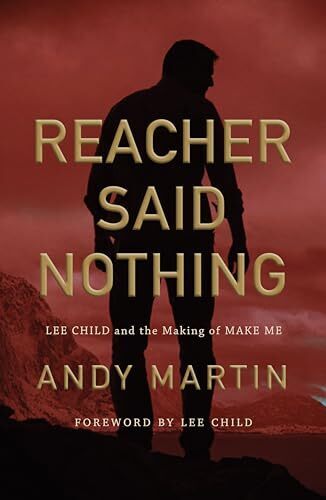
The good
This book gives you a glimpse into the writing process of Lee Child. This includes lots of fun, unexpected insights, such as:
-
He writes 1 Reacher book per year, always starting on the exact same day in September, which was the day he wrote his very first book, The Killing Floor. He writes until roughly April or March; the remaining months are either vacation or promotional / marketing events for his books. The first few months of this process, it seems like he writes sporadically (e.g., with lots of days off to go to various events), for just a few hours a day; the last few months are crunch mode, where he seems to be writing every single day, 8+ hours per day.
-
He is 100% a discovery writer, starting his books with absolutely no idea what the book is about or where it’ll go. He literally makes it up as he goes along, with no plan of any kind. The result is books full of grippy mysteries and fun characters… And, not too surprisingly, endings that are often a bit disappointing or nonsensical.
-
He claims that he never really edits his work. He writes up the manuscript, submits it, and that’s it. That said, he is then shown doing lots of small editing while he writes, and he mentions doing a full edit pass (using a different font so the text looks different) at the end too. I’m sure there’s some copyediting/proofreading/etc. that happens too, but we never see that. Still, unlike many other writers, it appears that he does not go through numerous major revisions, or send early drafts to his editor or other readers for feedback, or anything of the sort.
-
Lee Child obsesses over language, going back and tweaking individual words or phrases many times. It’s no accident that his writing feels so economical and smooth. One great insight I got from this: “write the fast parts slow, and the slow parts fast.” E.g., It’s OK to devote 15 pages to a 5-second action scene, but only 1 second to a 20-hour cross-country drive.
-
You get a funny mental image of Lee Child at work: apparently, he lives in a fancy NYC apartment; he wears a leather jacket (probably similar to what we see in the photo on the book cover) while he works; he drinks coffee and smokes cigarettes nonstop (we’re talking more than a dozen cups of coffee and 20+ cigarettes per day); he types with two fingers; he takes numerous breaks to lie on the couch and think; he also takes lots of breaks to watch soccer games.
The not so good
-
There is a ton of detail about how Lee Child’s writing process works that this book does not reveal. Does he do research? If so, how? Does he read books or talk to experts? Does he travel to any of the tiny US towns he describes in his books? How does he come up with characters? Does he flesh out their personalities somewhere? Or does he just make that up as he goes along too, and just remember it as he moves along? How does he ensure there is plot continuity and no glaring errors? Is it all just in his mind? Or does he take notes, draw timelines, etc.?
-
We only see the process for one specific book, but it’s not clear if this carries over to his other books. Has he ever had a book “go wrong”: i.e., he starts out, and midway through, realizes the book just isn’t working, and has to start over? Has he ever done multiple drafts/revisions?
-
There is a lot of filler material in this book: random tangents about a visit to a cafe, or a random conversation, or some silly joke the author is trying to make. These tell you far more about the author of this book, Andy Martin, than they do about the subject of the book, Lee Child.
-
Andy Martin comes off a little bit sycophantic in his interactions with Lee Child: no matter what Lee says, Andy agrees with him, compliments him, etc.
